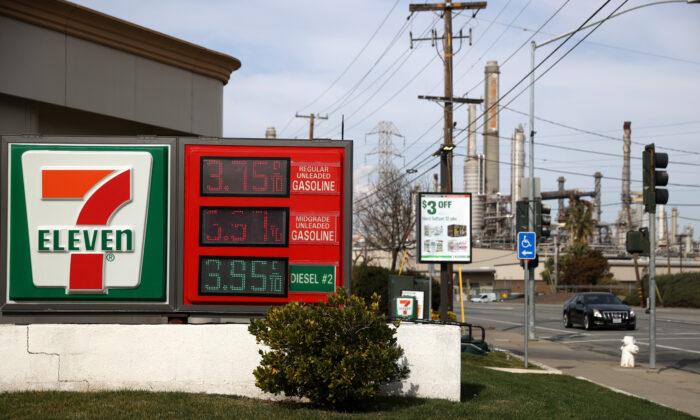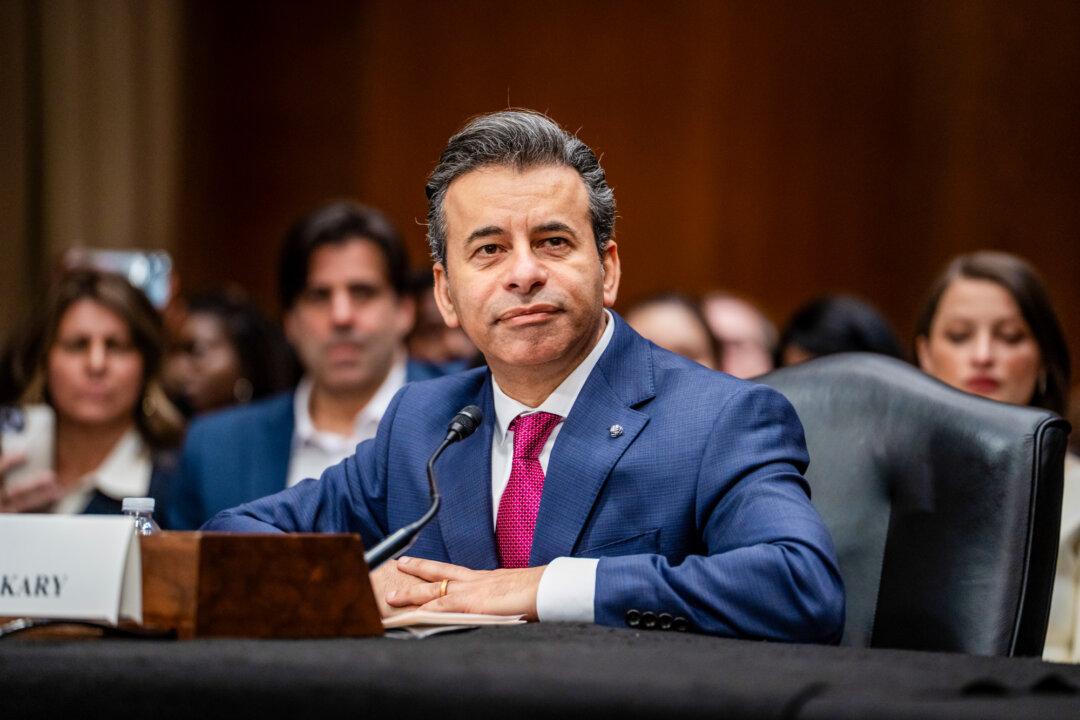While experts say the current gas price spike is mostly driven by demand recovering faster than the winter storm-squeezed supply, others warn “hostile” White House policies are likely to drive them even higher in the long term.
“The national gas price average will likely hit $3 by Memorial Day and stay around that price for the majority of the summer,” Jay R. Young, Chief Executive Officer at King Operating Corporation, a Dallas-based oil and gas operator, told The Epoch Times in an emailed statement.
Young explained the rising gas price story as resurgent demand combined with squeezed supply.
“Gasoline demand rose to the highest level last week since the pandemic began as cases are dropping and more Americans are getting out more and filling up,” Young said.

But with the vaccine rollout underway and continued reopening, demand continues to expand.
At the same time, production can’t keep up.
“On the supply side, the number of active oil rigs in the U.S. is standing nearly 50 percent lower than this time one year ago,” Young said, arguing that the most direct impact on the current price hike is coming from February’s winter storm that took 26 refineries offline in the United States.
Further squeezing supply is the fact that the Organization of the Petroleum Exporting Countries (OPEC) on Thursday agreed not to increase the level of oil production through April, with the exception of Russia and Kazakhstan. Last April, OPEC agreed to cut 10 million barrels per day of oil production in a bid to stave off an oil price collapse in the face of the pandemic-driven demand drop-off.
“Demand is recovering much faster than oil production level, which is why oil prices continue to increase rapidly,” Young said.
“Depending on which side of oil you’re on, you either hate it or love it,“ Young added, commenting on the OPEC decision not to raise production. ”Investors are happy, but come summertime at the pump, consumers should be prepared to pay extra premiums.”

“In the long term, we could see prices between $70-80 per barrel by 3Q this year,” Young predicted.
But some, like former Shell Oil president John Hofmeister, worry that President Joe Biden’s policies may drive prices even higher.
Hofmeister confirmed in an interview on Fox Business on Thursday that the supply squeeze was having the most direct, short-term impact on gas prices.
“But there’s something else that’s going on that’s more subtle,“ he said, namely that ”the industry, the producers, are practicing serious capital discipline and they’re not roaring back to produce more oil. And also, they’re getting squeezed by the administration,” he said.
“So the ban on leasing—the prohibition on new leases from the Biden administration—that’s going to create a psychology in the industry of, ‘There’s going to be less available,’ and the psychology drives the pricing as well,” he argued.
“As long as we see this hostile administration, we’re going to have a problem with prices,” Hofmeister added.
De Haan said in a tweet Thursday that Biden’s policies—which include canceling the Keystone XL pipeline project and imposing a moratorium on new oil and gas leases on federal land and waters—were not having an impact on prices in the near term, but posed an increased risk in the longer term.





